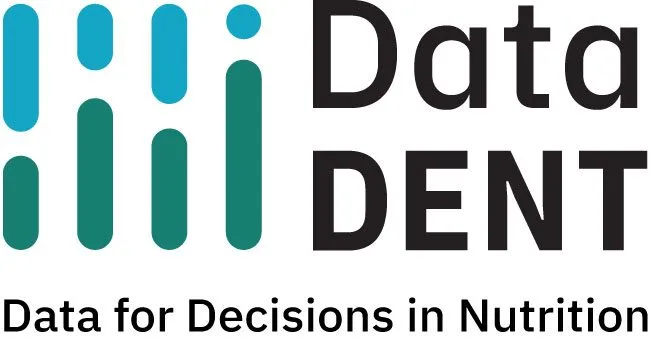When countries transition from iron folic acid (IFA) to multiple micronutrient supplements (MMS), they are not just swapping one type of tablet for another. They are introducing a unique intervention with implications for how we define and monitor micronutrient supplement coverage during pregnancy.
In our October 2023 blog post we explored the challenge of relying on maternal recall to monitor IFA supplement adherence. As countries transition to MMS, these challenges persist and, in some ways, grow more complicated.
DataDENT recently collaborated with research partners in Ethiopia and Bangladesh to identify ways to improve household survey questions about coverage of iron-containing supplements during pregnancy. Below we reflect on what we have learned about the challenges of monitoring the introduction and scale-up of MMS through our research and our broader engagement with stakeholders involved in the IFA to MMS transition.

Image 1. A researcher from DataDENT partner icddr,b is interviewing a pharmacy seller in Bangladesh as part of the market assessment
Defining the intervention
A deceptively simple question is at the heart of MMS monitoring: what exactly “counts” as a woman receiving MMS?
Variability in formulation: Current programmatic guidance from the MMS community focuses on the UNIMMAP formulation of MMS. In practice, however, pregnant women may already have access to multivitamins with varying nutrient compositions that may or may not meet UNIMMAP specifications. This might be more of an issue in urban settings, where private pharmacies, health facilities, and other retailers stock diverse options.
Variability in delivery platform: Most countries deliver iron-containing supplements as part of routine antenatal care by public sector providers. However, in some contexts women receive antenatal care from other provider types (e.g., private or NGO clinics). They may visit multiple providers and access products through pharmacies and retailers.
Which combination of formulation and delivery platform should be “counted” as a woman receiving MMS? Choices around what to include in the intervention coverage definition may differ by country context and can shift over time. These challenges may be more pronounced early on in the transition, when branding and distribution channels are still being established.
Women’s ability to identify the intervention
Even if there is a clear programmatic definition of MMS, there are monitoring challenges related to whether or not women can recognize and differentiate between different iron-containing supplements.
Lack of distinct terminology: In our research in Ethiopia and Bangladesh we found that the English term “iron” is used for antenatal micronutrient supplements, regardless of type. Terms such as “MMS,” “multivitamin,” or “prenatal” are not reliably understood by women.
Evolution of branding: It may be possible that women in Ethiopia and Bangladesh did not differentiate between MMS and IFA because the countries are in an early phase of rollout. However, unless there are deliberate efforts by the health system to brand MMS as distinct from IFA and in some contexts calcium, ambiguity may remain.
Distinct terminology and branding are critical for effective program implementation and for measurement.
Designing effective visual aids
When words fail, pictures can help but, in our research, we faced challenges with designing visual aids that helped women identify what type of iron-containing supplement they received or consumed.
Lack of distinct visual cues: In low literacy contexts, where women cannot read text on packaging included in a photo, similar packaging styles (e.g., silver blister packs) and graphic design (e.g., pregnant woman silhouette) can make it difficult for women to visually differentiate between supplement types. In Bangladesh we found that all government-supplied supplements and medications have similar outer packaging designs, limiting the potential for packaging to reinforce distinctions between IFA, MMS, and calcium.
Repackaging of supplements: Women may receive supplements in ways that differ from the original packaging (e.g., loose pills in bags; blister strips without a box). This complicates the use of standardized product photos, as visual aids may not always reflect the form in which supplements are accessed.
Selecting representative images: Given the diversity of products available across public and private facilities, pharmacies, and retailers, it is challenging to select only a few products to feature in the visual aid to represent an entire category (e.g., IFA, MMS).

Image 2. Visual Aid Developed in Ethiopia Formative Research
Recommendations
The challenges we have described underscore that MMS is not just a new type of supplement—it also presents new measurement challenges. Moving forward, key considerations for effective monitoring include:
Develop clear indicator and monitoring guidance: Countries need consolidated guidance on what and how to measure coverage at different stages of MMS introduction and scale-up. This includes how MMS indicators can be integrated into national monitoring platforms (DHIS-2, HMIS) and/or large-scale household surveys and whether IFA indicators should be phased out.
Adapt core questions to context: Measurement tools including household survey questions and visuals need to be adapted, tested, and refined in each context to ensure they are locally understood, but also produce comparable indicators across countries and times.
Emphasize the importance of unique branding in program design and delivery: Deliberate differentiation between IFA, MMS and other micronutrient supplements needs to be part of program design. Decisions and standards about terminology, pill appearance, and packaging are critical to improve recognition.
Looking ahead
Earlier this year, DataDENT submitted recommendations based on our preliminary research findings for revised DHS-9 questions to monitor iron-containing supplements during pregnancy (MMS/ IFA). The uncertainty around the future of the DHS Program allows more time for the design and development of new core household survey questions.
In early 2026, Johns Hopkins Bloomberg School of Public Health and Healthy Mothers Healthy Babies are planning to sponsor a meeting about monitoring and measurement issues with national and global MMS stakeholders.
Follow DataDENT on LinkedIn, Bluesky & X to learn when the technical note and research publication are available on our website tools and resources page.
